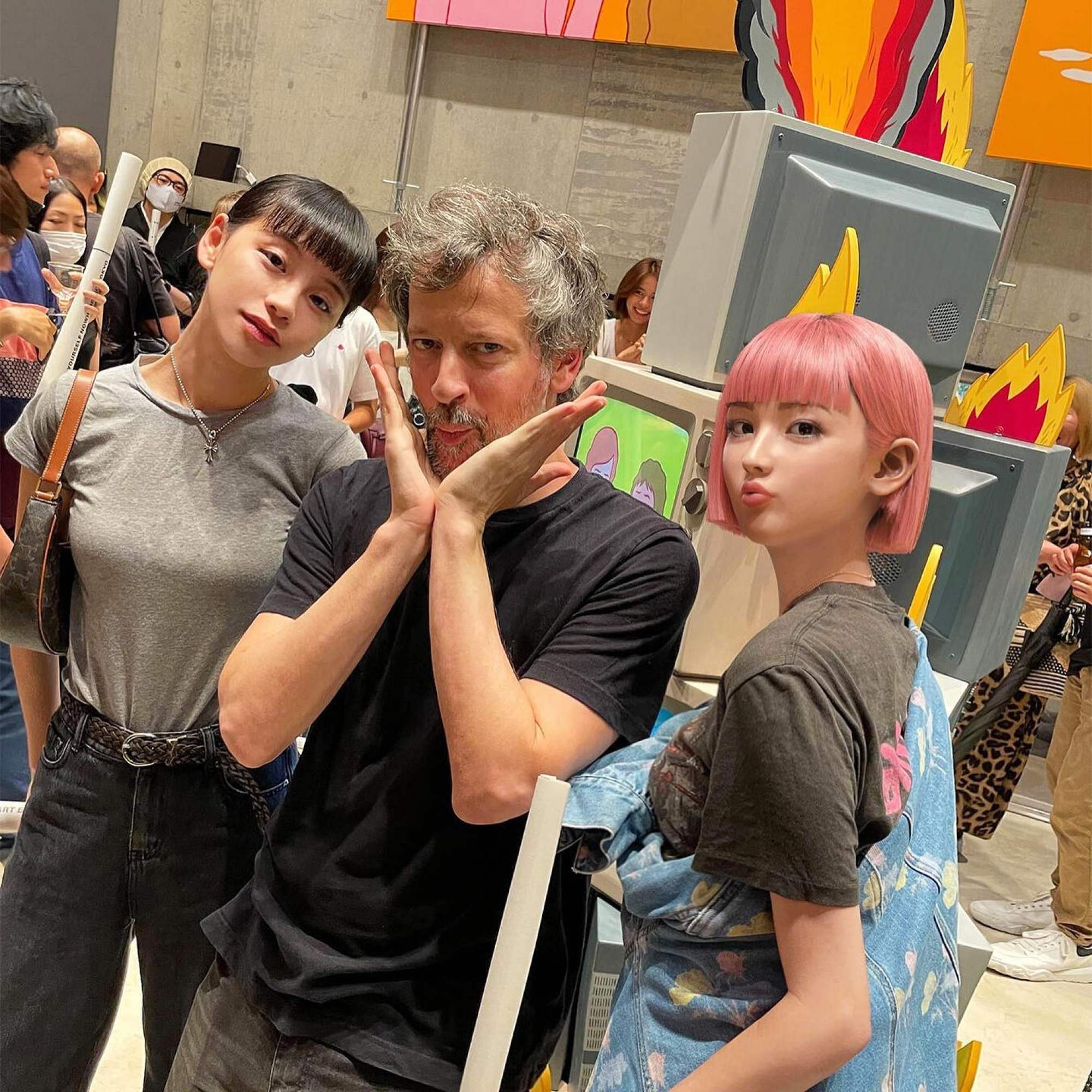
Virtual influencers are posting crying selfies and opinions, and taking pictures with celebs and friends – blurring the line between digital and real life
- These influencers have millions of people following their every post, from public breakdowns to their attending art shows. The kicker – they are not real people
- Virtual influencers are becoming increasingly lifelike – not just in appearance but in personality – and are blurring the line between the digital and real life
This pink-haired artist and influencer, clad in a tracksuit, has not slept a wink after pulling an all-nighter at the office, she says.
“I sketched up some cute stuff. Don’t tell anyone I didn’t take a shower yet,” she adds, gazing intently at her laptop, pen in hand and surrounded by magazines.
However, imma is not the Japanese woman she appears to be on Instagram – she is not in fact a person at all.
Aww Inc, the company that developed imma, says she is Japan’s first virtual model.

Just like real models, they can also be found on fashion magazine covers, advertising products and even on concert stages, drawing thousands of viewers.
To optimise the optical illusion surrounding imma, she regularly shares photos on social media that show her interacting with real people.
She was recently spotted alongside Spanish cartoonist Joan Cornella at his exhibition opening in Tokyo in Japan, for example, or with DJ Steve Aoki and the reggaeton star Maluma.
As well as jet-setting from one fashion metropolis to the next, imma also regularly shares her feelings with her 400,000 IG followers.

“Since I was born, I’ve always hated being lonely,” she writes below a picture of herself wearing an outsize hoodie, carrying a black umbrella and looking sad. “What do you do when you’re lonely?”
In another post, she talks about having a fight with her brother.
These emotional statements show imma’s makers stretching the boundaries of what we expect of the virtual world, creating a personal bond by deliberately portraying their characters as vulnerable.

That seems to be working, if her legion of followers on Instagram are any indication.
When asked about the obvious artificiality of imma’s emotions, her creators point out that even real influencers are often accused of staging fake lives online – ultimately, people live so much in digital spaces that the border with reality is blurred.
“Everything we see online and in the media is a narrative, and every individual has the choice whether to believe it or not.”

He would like to see more transparency around the programs that are being used, and says not everyone can immediately recognise that virtual influencers are not real people.
“Not every person is aware of the business models of data extraction and exploitation behind them either,” he adds.
Zöllner sees this as a form of exploitation that reaches deep into the core of human beings.

imma, for example, is brought to life in a studio, among other things with actors, through motion capture.
For some virtual influencers, artificial intelligence is involved, such as Kuki Ai, who talks to fans on her website through a chat robot. On social media, on the other hand, Kuki still has to be controlled by real humans, says virtualhumans.org.

In one post, the 19-year-old shows her 2.8 million followers a photo of mascara-stained tears running down her face, accompanied by the phrase: “Normalise ugly crying in public.”
It is unclear whether her fans see this as authentic or not. Either way, Time magazine voted the influencer as one of the 25 most influential people online in 2018 – alongside then-US president Donald Trump and pop icon Rihanna.
On the flipside, “as a human, you’ll also have them figured out quickly if you spend a little time with them. And they probably get boring quickly,” says Zöllner.
Zöllner sees indications that people will be invited further into virtual spaces by tech companies, “where we are supposed to interact with each other and also with virtual figures in a variety of ways”, and says it is up to the people themselves to create something from such technical possibilities that is useful for society.

